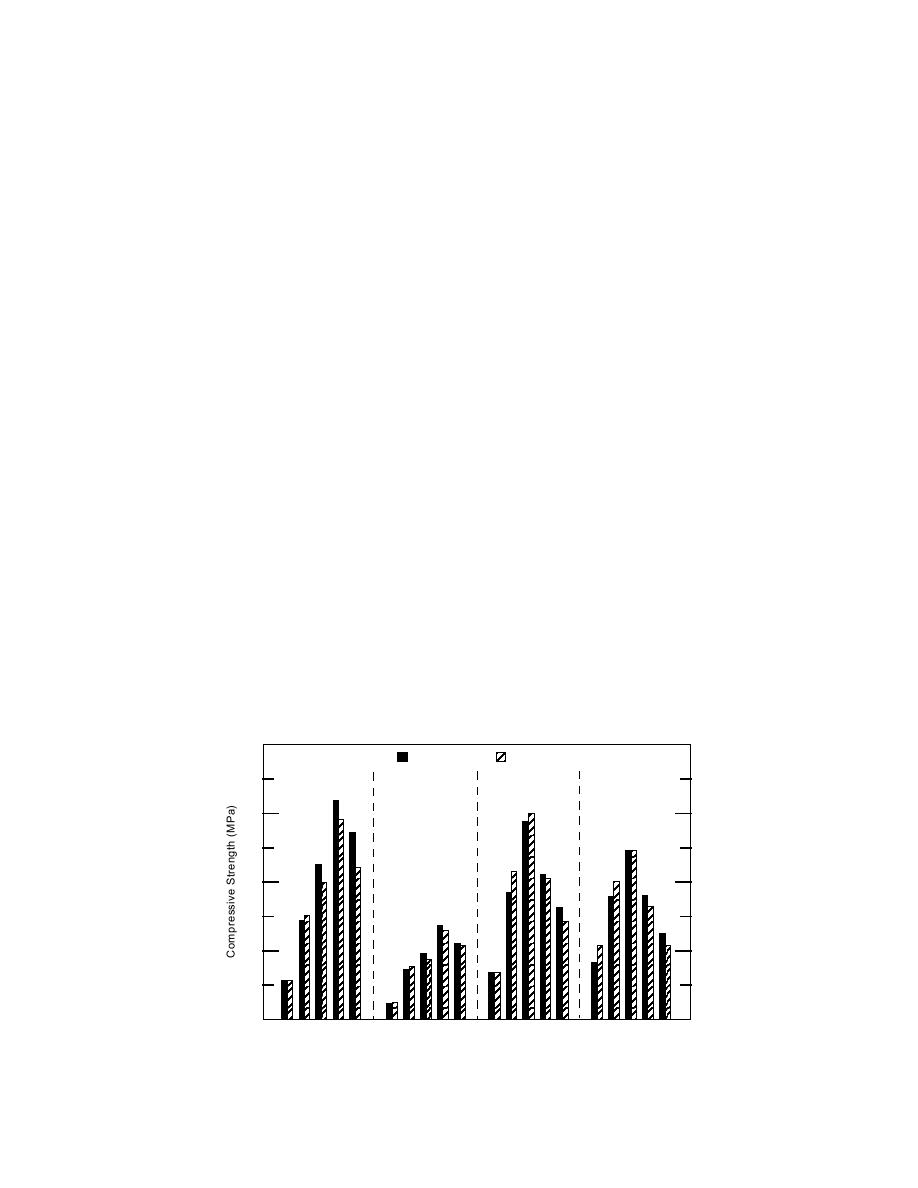
cylinders in three equal lifts and was consolidat-
Freezing strength
ed using a vibration table. This method of cylin-
Objective
der consolidation overcame many of the difficul-
Mortar is most susceptible to frost damage at
ties of dealing with the different moisture levels
early age because: a) its pore structure is under-
between the mortar batches. Once consolidated,
developed, and b) its moisture content is high.
the filled cylinder molds were capped with plas-
Based on these two conditions, two experiments
tic lids and placed into a 20C (4F) room over-
were devised to establish thresholds of when
night. The next morning the cylinders were
mortar can withstand one cycle of freezing and
moved into a 20C (68F) room. After 28 days, not
thawing. The objective was to determine these
including the time in the cold room, the mortar
thresholds in terms of moisture content or in
cylinders were stripped from the plastic molds
terms of maturity.
and tested for compressive strength. Control cyl-
inders from each batch that were not subjected to
Critical moisture
freezing temperatures were tested at an equiva-
As stated above, the moisture content of mor-
lent age.
tar is a critical factor during early-age freezing.
Figure 11 presents the compressive strength
Mortar is typically mixed to a moisture content of
test results from the four mortars made with five
between 13 to 16%, but due to evaporation, ab-
different moisture contents. As can be seen, all
sorption into masonry units, and cement hydra-
mortars were unaffected by being frozen at mois-
tion, its moisture content declines. Current guid-
ture contents of 6 and 8%, and each had a 28-day
ance is based on the premise that mortars that are
strength that was equal to or greater than that of
frozen while they contain more than 6% moisture
the control mortar. In fact, the mortars performed
will be frost damaged and subsequently never
better, compared with the control, when frozen at
develop full strength. Conversely, it is believed
8% moisture contents than when frozen at 6%.
that mortars with moisture contents below 6% are
The effects of frost damage started to become evi-
frost resistant. This section evaluated the effect of
dent at a moisture content of 10%. At that level,
freezing on fresh mortar in an attempt to identify
the portland cementlime mortars suffered a 9 to
the maximum moisture content that mortar may
12% loss of strength, but the masonry cement
have and still be immune to one event of freezing.
mortars were largely unaffected. (Microscopic ex-
The four mortar types described earlier were
amination showed the masonry cement mortars
made into several batches, each containing a dif-
contained entrained air bubbles. The portland
ferent moisture content. Once mixed, the mortars
cementlime mortars did not contain entrained
were cast into 50- 100-mm (2- 4-in.) plastic cyl-
air.) At moisture contents of 12% and above, all
indrical molds. The mortar was placed into the
mortars showed some, though not significant,
40
No Freeze
Freeze
Portland
Portland
Masonry
Masonry
Cement/LimeM
Cement/LimeN
CementM
CementN
30
20
10
0
6 8 10 12 14
6 8 10 12 14
6 8 10 12 14
6 8 10 12 14
% Moisture
Figure 11. Critical moisture.
12





 Previous Page
Previous Page
